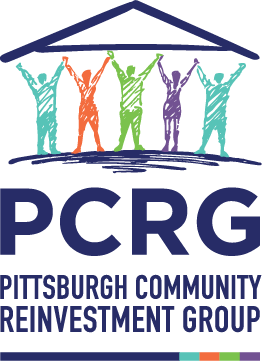The American Dream has long promised that homeownership is the gateway to stability, security and wealth. But a newly released report from the Pittsburgh Community Reinvestment Group (PCRG), Black Homeownership and Wealth Building in Allegheny County, shows that promise is far from reality — especially for Black residents.
After eight years of growth, the U.S. homeownership rate — a crucial milestone in the American Dream and a measure of what households consider “a good life” — fell in 2024. Soaring home values and prices as well as lagging new construction have triggered a national crisis — but for African Americans, the crisis isn’t new. And, in Allegheny County, the racial homeownership gap remains staggering: the Black homeownership rate is half that of white households.
Even for Black households who do own homes, systemic barriers reduce their chances of reaping the same rewards. Their journey to homeownership is also fraught with unfair disadvantages, according to PCRG’s report.
Black Households in Allegheny County Have Less Choice in Where They Live
A recent survey by Catapult Greater Pittsburgh found that community and stability are among the top reasons people aspire to own a home. However, PCRG’s analysis of mortgage lending data shows Black residents of Allegheny County don’t have as much choice as their white counterparts about where to buy a house, and in what community to grow their roots. Black low- to moderate-income (LMI) buyers — those earning 30-80% of the region’s median income — are disproportionately excluded from higher-income neighborhoods, compared to white households of the same income group.
In 2023, nearly 75% of white LMI borrowers in Allegheny County were approved for home purchase loans in middle- and upper-income census tracts. Only 40% of Black borrowers in the same income bracket did. More than half of Black buyers were confined to lower-income areas, which often lack the same quality schools, health infrastructure as well as job access. Moreover, the study shows that low-income is persistent and low-income areas in Allegheny continue to remain low-income over a span of more than 20 years.
Where you live impacts your long-term health, children’s education and the ability to generate and pass wealth to the next generation. This isn’t just about housing, but opportunity.
Black Homeowners Are Paying More — and Getting Less
The topmost appeal for homeownership is wealth building, something Black homeowners in Allegheny County also don’t get an equal opportunity to do. PCRG’s report shows Black and Hispanic mortgage borrowers are often unable to make the same level of down payment as white borrowers, resulting in higher loan-to-value (LTV) ratios — a measure of how much of the home’s purchase price is being financed through a loan. In 2023, Black borrowers in Allegheny County had an average LTV ratio of 96.5%, compared to 90% for white borrowers. This means Black buyers are financing nearly the entire cost of their homes, starting out with more debt, which leaves them more financially vulnerable in the event of job loss, rising interest rates or unexpected expenses.
The costs don’t stop there. Loan fees as a percentage of total loan amounts are also higher for Black borrowers, compounding the burden and shrinking the wealth-building potential of homeownership.
Appraisal Bias Devalues Black Communities
PCRG’s report finds that for every percentage-point increase in the Black population in a neighborhood, median home values drop by 18 percentage points when controlling for income and other factors. This is strong evidence of appraisal bias. It means that Black homeowners might see lower sale prices, not because of the home itself or the area income, but because of who lives nearby. It’s yet another way the market systemically undervalues Black lives, even in moments of economic success.
Progress is Possible — but Not Guaranteed
Despite the disparities, homeownership still offers important benefits across all racial groups — including the ability to build wealth, greater residential stability, and protection against rising rents. While rent payments often increase with inflation, most mortgage payments remain fixed, shielding homeowners from the financial strain of annual rent hikes. In Allegheny County, there have been signs of progress: more people of color and low- to moderate-income households are accessing mortgages. It’s a sign that decades of advocacy and policy reform are making an impact — though much work remains.
There isn’t equity in access to homeownership — and even when opportunity exists, it rarely leads to equitable outcomes. Most policies aim to level the playing field, but we haven't reached a stage that can close the wealth gap yet. But if homeownership is to remain a pillar of the American Dream, we must go beyond offering opportunity alone and confront the structural barriers that continue to block Black households from building and sustaining wealth. But the solutions are within reach:
Ensure affordable homes exist in all neighborhoods, no matter the income levels
Strengthen protections against appraisal bias
Support equitable lending practices that reduce debt burdens
The full report offers deeper insights and data for policymakers, lenders, and community advocates alike.
If we want homeownership to be a pathway to prosperity for everyone, we have work to do — and the time to act is now.


